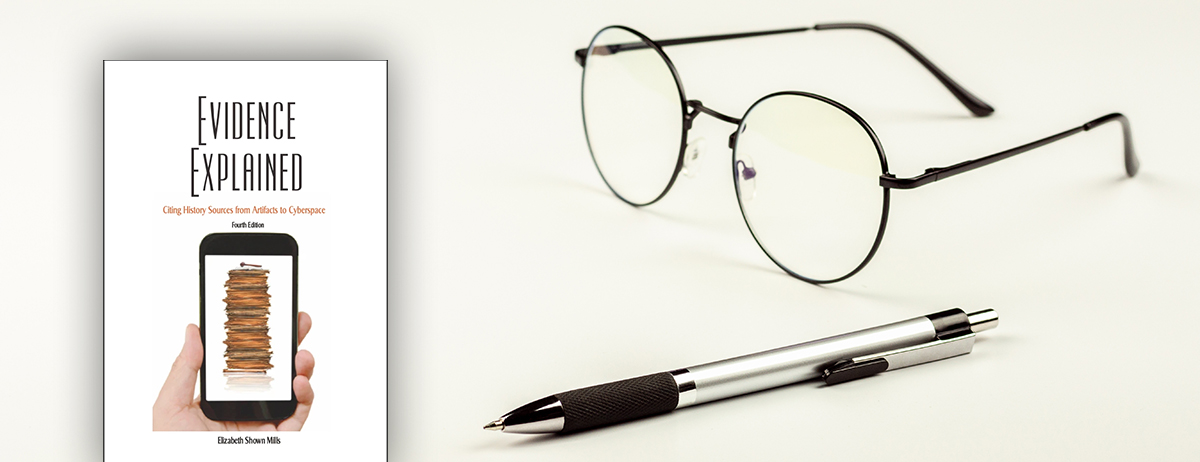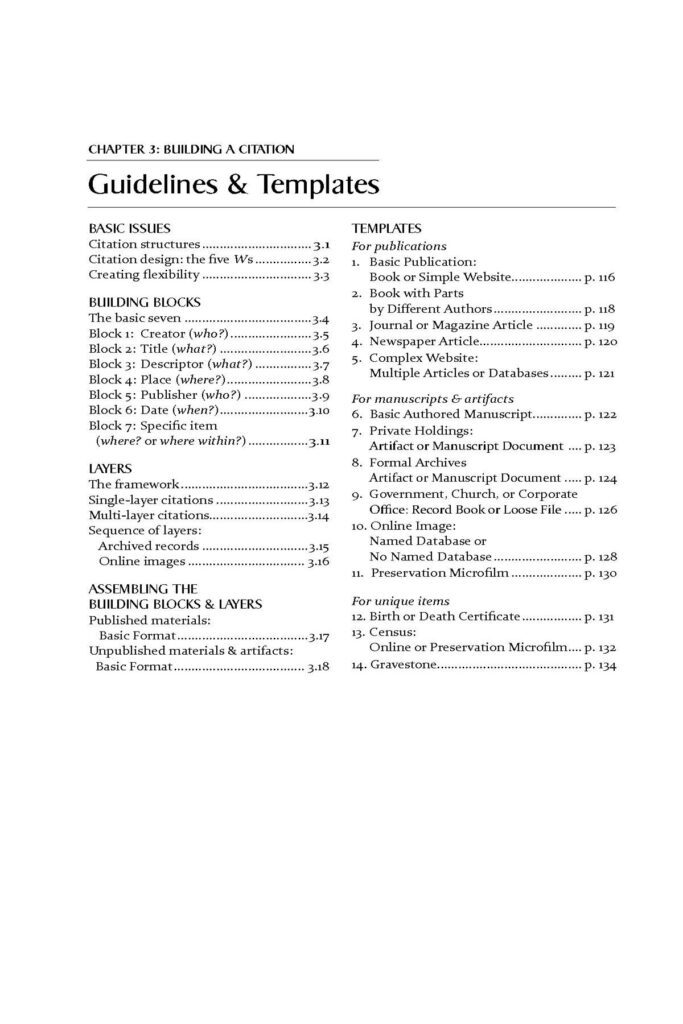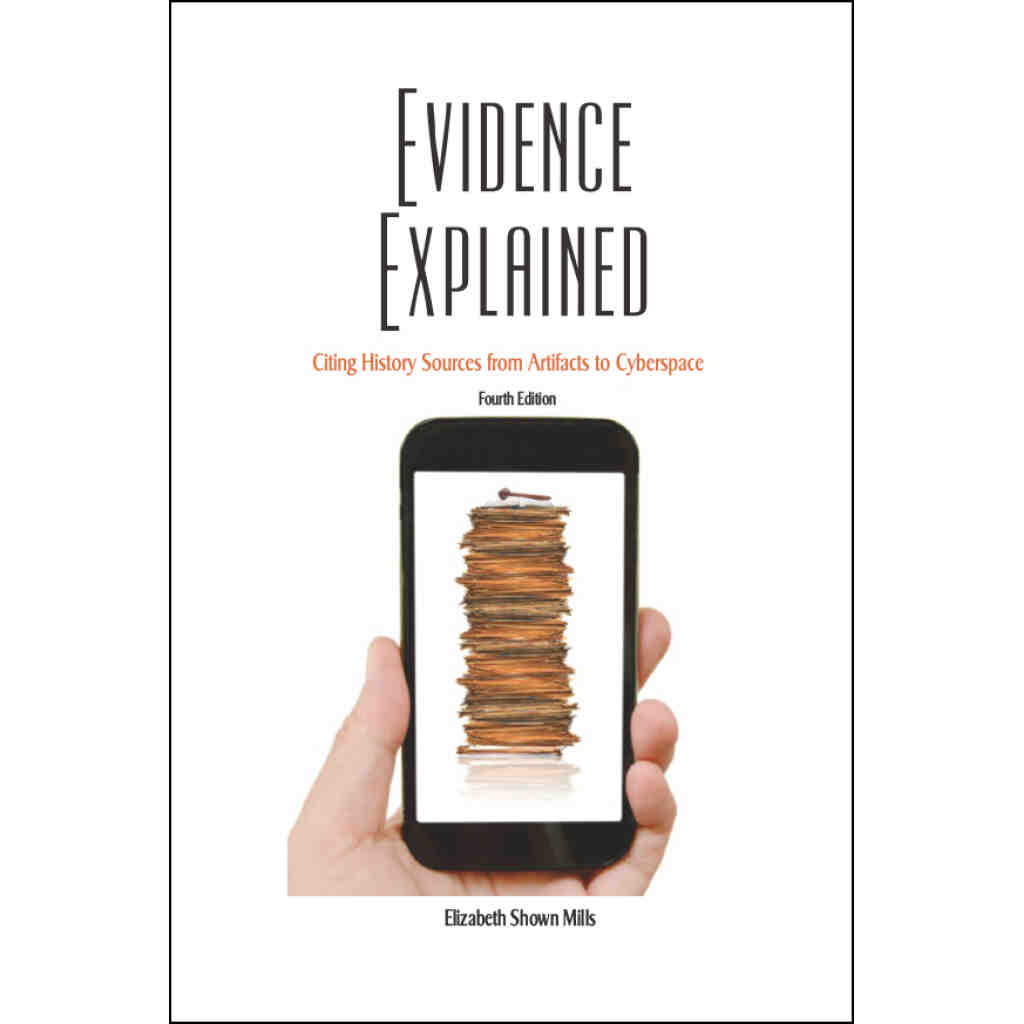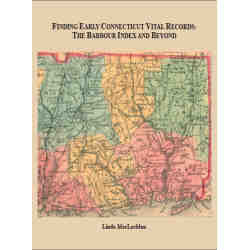
Reviewers have praised Elizabeth Shown Mills’s fourth edition of Evidence Explained for its new chapter: “Building a Citation.” Step by step, this tutorial explains the building blocks of a citation and how to layer those blocks to handle today’s complicated online sources. Mills’s tutorial concludes with fourteen universal templates that can be used to cite any source, anywhere.
Today, as a sampling, we bring you the introduction to EE’s new Chapter 3.
3.1 Citation Structures
Citations are flexible structures. As with any type of structure, certain elements are essential while others are optional. Standard building blocks can be assembled in various ways to fit each need.
This chapter teaches you the seven building blocks of a citation. It then demonstrates how those building blocks can be selected, combined, and layered to create a thorough identification for any type of historical source.
History researchers use three types of citations:
- First (Full) Reference Notes: for footnotes and endnotes, used at first citation to a source in a piece of writing; also used for document labels
- Subsequent (Shortened) Reference Notes: for repeated references, after a source has been cited in full
- Source List Entries: for a concise list of materials consulted
The First Reference Note is the default for history researchers. For notetaking, document labeling, and writing, the First Reference Note is where we record all details that identify the evidence for each assertion we make.
This chapter’s tutorial focuses on the First Reference Note. In each of the source-based chapters that follow, as we discuss each source type, we will demonstrate how to apply this chapter’s basic templates to a myriad of historical sources. There, each citation example will also show how to shorten that First Reference Note to create Subsequent Notes and Source List Entries.
3.2 Citation Design: The Five Ws
Citations are designed to answer five questions about each source: Who? What? When? Where? and Why should I believe this bit of information I’m taking from this source?
Each piece of information in a citation is there to answer one of these five questions. A single citation may address some questions multiple times. For example:
- The Who? question is used to identify (a) the entity that created the source; (b) the entity that edited the source; and (c) the entity that published the source.
- The Where? question is used to identify (a) where a book or website is published; (b) where a unique record is held, and (c) where within the source we found the specific piece of information—e.g., a page, figure, or entry number.
- The Why? question addresses the reliability of every “fact” or opinion we copy or assert. Our answer to Why should I believe this piece of information? may be detailed in a separate sentence or paragraph attached to the citation. It also will be silently addressed within each building block we use for a citation. For example:
- Author/Creator: This Who? identity speaks to veracity or experience. This building block is often our first measure of whether information might be reliable.
- Title: The What? information we supply, when we identify the title of a source, is not merely a name by which to call it. That title speaks to the nature of the information we take from that source—another point critical to our Why should I believe this? decision. For example, if the title identifies our source as tax records of the city of Milwaukee, then this building block needs to convey whether we have used the original records or abstracts of the record that might contain serious misreadings, omissions, or even additions. With titles, the formatting itself conveys information about the source. We may also need to add a descriptor to that title to record other relevant details.
- Publication/Creation Date(s): The When? details we report for a book or manuscript can be critical to our evaluation of its content. For example, a book titled Early Times in Queensland, 1820–1860, published in 1861, might be expected to offer memoirs of a person who lived there through those years. That same title, however, could also be used for a 2002 history of Queensland, as interpreted by a remote writer mining fragmentary records. Or an 1861 memoir of that name could have been reissued in 2002 in the same format—or with editorial additions and deletions. Citing a reprint or new edition to just the modern date, without noting the original date, might mislead our readers—or ourselves at a later time after our recollection of this source has grown cold. The relationship between content and its author, as explained by our When? question, can be critical to our Why should I believe this? question and should be stated in a clear manner.
- Publisher: The Who? information we supply for a book’s publication data (the identity of its publisher) may also affect our Why? assessments. When that publisher is a university press, for example, we have an assurance that the content has undergone at least some vetting for accuracy, something we cannot assume if a work is self-published. While any type of publication can err, the identity of the publisher is one factor we weigh in evaluating Why should this piece of information be believed?
3.3 Creating Flexibility: Building Blocks & Layers
History sources are complicated. Unpublished records and manuscripts are archived in complex ways. Images of manuscripts are accessed offline in now-antiquated forms and online through labyrinthian delivery schemes. Citing these materials, as cautioned at 2.1, is an art rather than a science. Creating those citations, as cautioned at 3.1, requires flexibility. Flexibility is achieved through the use of two formatting tools:
- Building blocks, detailed in sections 3.4 through 3.11 of this chapter and demonstrated in Templates 1 through 14.
- Layers, into which building blocks are organized, as explained in sections 3.12–3.16 and demonstrated in Templates 6, 8–14.
Below, Chapter 3’s Table of Contents summarizes its instruction and itemizes EE’s new fourteen basic universal templates. (VIEW EVIDENCE EXPLAINED. 4TH EDITION)





